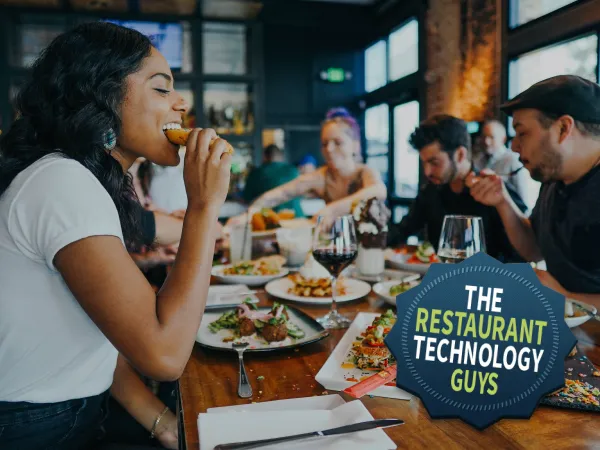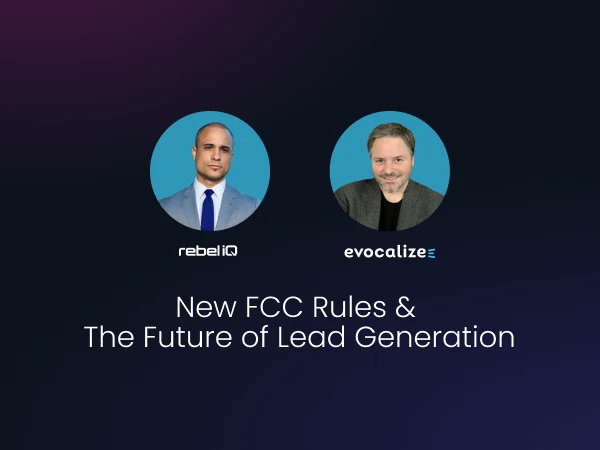The best tactics to acquire new customers for restaurants in 2023
Struggling to acquire new customers for restaurants? Don’t worry, you’re not alone. Many restaurants struggle to connect with potential customers in their area.
Luckily, Matthew Marx, CEO of Evocalize, stopped by the Turning the Table podcast with some game-changing tips for acquiring new customers for restaurants. With over 15 years of local marketing experience, Matthew knows his stuff.
Key takeaways
Here are the key takeaways owners need to do to acquire new customers for restaurants:
- Focus your efforts locally. Local marketing performs better than broad brand campaigns when it comes to acquiring new customers for restaurants.
- Meet customers where they are – on TikTok, Instagram, Facebook, etc. You’ve gotta have an omnipresent digital strategy if you want to drive real traffic.
- Paid advertising is crucial, especially on platforms like Facebook where organic just doesn’t cut it anymore to acquire new customers for restaurants. But don’t just blast ads willy nilly. Use sophisticated targeting to reach potential customers at the right times and places.
- Focus on lifetime customer value. How many times will that new customer come back over the course of a year? Do the math to determine your acquisition budget.
- Start with awareness campaigns to get on locals’ radar. Then offer promotions at slow times to drive traffic and online orders. Small wins create momentum.
Stop shouting into the void. Follow these tips to successfully acquire new customers for your restaurant in 2023 and beyond. The future of customer acquisition is here – it’s time to seize it!

Transcript
Adam Lamb
Welcome to another episode of Turning the Table. My name is Adam Lamb, and I am a career coach for chefs and hospitality professionals. And my cohost, Jim Taylor, who is busy getting into the studio right now is the founder and CEO of Benchmark Sixty dedicated to assisting food and beverage operators actively manage and be proactive about their associate workload, such they become the preferred employer in their market.
As always, the chat is live. We’d love to have your comments and help guide the conversation. And today we’re talking about leveraging data to drive local marketing. And it was funny because I went to the mailbox the other day, and I had direct mail from several restaurants one of which I think was Ruth’s Chris and a couple of other ones.
And the first thing I thought of was like, that’s really old school. Like, some folks are really dedicated to their process. And I don’t know about anybody else, but it seems like since the pandemic, everybody’s been drinking from the fire hose. Like, the first thing was, let’s get the place open. Let’s get the operations back up again.
And it seems like a lot of those folks are now kind of in their flow. That consistent forecasting. They’re fully staffed. Everything seems to be flowing and maybe now is a great time to start looking at what you’re doing for marketing because I get that when the pandemic ended, all you were doing was holding on for dear life and just managing the operation.
But I think you’ll agree that the only way that we’ll ever be able to grow our businesses is if we’re actively marketing to our community. Not only for new customers, but also for new associates. Hi, Jim.
Jim Taylor:
Adam. Good morning. Good afternoon, depending where you are be there, I’m here.
Adam Lamb:
It’s all good. And in a moment we are going to be bringing in Matthew Marx, the CEO of Evocalize. And they make complex marketing push button simple and in all transparency, Evocalize has been a trusted partner and sponsor of this particular podcast. And so we’re really, really excited to get him, the man, on the mic. And we’ll do that right after these messages.
Welcome to Turning the Table. The most progressive weekly podcast for today’s food and beverage industry, featuring staff centric operating solutions for restaurants in the hashtag new hospitality culture. Join Jim Taylor of Benchmark Sixty and Adam Lam as they turn the tables on the prevailing operating assumptions of running a restaurant in favor of innovative solutions to our industry’s most persistent challenges.
Thanks for joining us. And now this episode is made possible by Evocalize. Evocalize makes complex local digital marketing push button easy for anyone. Empower your franchises with programs that automatically optimize performance and program spending across Google, Facebook, Instagram, and TikTok. All from one easy to use collaborative marketing platform.
To find out more, go to turningthetablepodcast.com/Evocalize. Jim before we bring Matt in and I was curious, you talk to a lot of operators almost daily. And so what have you been hearing from these folks when it comes to like what they’re actually doing for a local market? And is it working?
Jim Taylor:
Well, I can answer that lots of, quite lots of different ways. And I’m looking forward to hearing what Matthew has to say about it. But the thing that I keep hearing regardless of if it’s working or it’s not working or, you know, what market they’re in or what type of concept they’re in, even quick serve, full serve, fine dining, anything.
Everything I keep hearing is how do we find a way to drive more customers? Because in most markets, based on what’s happening in the world, people are spending less, right? So the, if we’re, if we’re seeing people spending less, we have to find a way more than ever to drive more customers. And so that’s the big discussion I keep hearing is we’ve got to find a way to drive more traffic you know, they can always try to sell more to their existing customer and that kind of thing, which is obviously going to be good.
But the whole concept of local drive more people, not tourists, not, you know, obviously that’s good too, but this conversation on local marketing, I think, is incredibly valuable. What are you hearing now?
Adam Lamb:
I couldn’t agree more. And I think, you know, you put a great, well, let’s get the expert in here and let’s ask him.
So we’d like to welcome Matthew Marx to the conversation. The CEO of Evocalize. How are you? Welcome, sir.
Matthew Marx:
Hey guys. How’s it going? Love some of the intro and lead up and the Ruth’s Chris direct mail postcards and how do we drive more people into the restaurant location, man? You’re getting me get me all jazzed up.
Jim Taylor:
Well, we’re excited to have you. I think there’s going to be lots of good discussion, but it’s interesting because I was literally talking to an operator yesterday that has a little restaurant in a, you know, medium size market, and we’re looking at what’s happening with their business, right?
And we’re we’re seeing this decline happening because people are holding on to their money a little bit more than they maybe have been in the past bit.
And they’re just going, “We got to find a way to get more customers.” And you know the first idea they had, and it’s funny that Adam mentioned the postcard or whatever you want to call it, they said, “Let’s give some little handouts to every one of our staff members and they can go and hand them physically to their friends and we’ll count how many come back” and I’m going, you know, it’s grassroots.
There’s nothing wrong with it, but there’s better ways.
Matthew Marx:
Yeah, no doubt. I mean, it’s interesting. I can tell you story after story about this stuff. Right? So I was in at a local franchise location, I don’t know, maybe a month ago now, and the franchise owner was in the store. And so the store is empty. And we live around the corner in Austin, Texas from this location.
I had never been in, never seen it, never knew it was even there. Right? And so but we saw it and thought, “Let’s try this new spot out.” And so the place was completely empty and it’s a cool concept, right? Where you have the taps for beer and I love drinking beer here and there. Right.
And so I can go self-serve and fill up my beer. And so I start a conversation with this franchise owner and I said, “How’s the business doing? How long has it been open? A month, two months? Because this is our first time in.” And he said, “We’ve been open a year.” And I said, “Well, I live in the neighborhood right around the corner. I’ve never heard of you. What are you doing?”
He’s like, “It’s been slow, man.” And I said, “Well, what are you doing to bring people?” You have no idea who I am, right? So I’m like, “What are you doing to bring people in?” Cause I just want to help them. Right? Like these are operators. They’ve sunk their money, their time, their livelihood, everything into these businesses. Right?
And so to me, it hurts me. You walk in there and it’s empty. But the food was good. The service was good. He’s in there himself, right? Like scrappy. So I asked him and he said, “No, I don’t know what I’m doing wrong.”
He went, “You know, managed restaurants for a long time. I went and talked with the local high school. I put some flyers up there. I went around, I put them on bulletin boards. I, you know, and I put signs on the wall and I, you know…”
And I’m like, “Look, like, what are you doing in TikTok? You know, what are you doing in, right? And so where are you? Are you the places where people are today?” And he, he just had no idea, right?
And so, and he’s trying to run a business and make a business successful. So it’s hard. So I get that, but you know, it’s on one hand, you get that level of complexity. Which is like to me, non existent and the other level, which is I was talking to my 13-year-old son yesterday and he said, “Dad,” (he’s a Dominoes fan, right?).
So he’s got the Dominoes app loaded up and he’ll just randomly like spend his own money and get a Dominoes delivered to the house instead of mom’s healthy dinner. Right? And so he’s like, “Dad, I don’t get it.”
You know, we talk marketing around the table, so it’s a little different, but he’s like, “Dad, I don’t get it. Domino’s is messaging me at like 2:00 pm in the afternoon. I’m at school. They’re messaging me at 10:00 pm. It’s missing the mark. They shouldn’t message me right at 5:00 or 6:00 pm when I’m hungry.”
And I said, you know what I said? He’s like, “They’re really bad marketers, dad.” And I said, I worked for the Domino’s folks. They’re pretty smart. And I see, you know what they’re doing. They’ve got a queue. It’s an hour and a half long at 5:00 pm they’re getting their kitchen is fully booked. But at 3:00 pm and 9:00 pm, they need more people to come in because the folks are sitting around waiting for waiting for orders, right? And so that’s really smart marketing.
So we have like this like someone walking around not enough hours in the day to visit the number of schools and physical locations to make, drive real traffic to Dominoes at a high sophistication level, looking at load forecasting and demand and driving it when and where it seems. So this thing runs the gamut.
Jim Taylor:
Wow. So, yeah, that’s, that’s really interesting. And you guys spend time with all kinds of restaurants, quick serve, full serve, all kinds of stuff. Maybe this is jumping ahead a little bit, but one of the things that I’ve been really, you know, looking forward to asking you when it comes to that, you just mentioned TikTok and we’ve talked to lots of some of the experts on TikTok around, you know, marketing and that kind of stuff had a few of them on the show.
Is that best for quick serve? Is it best for full serve? Does it matter who should be doing that?
Matthew Marx:
Everyone. I mean, you know, like and those of us with like, you know, some gray hair sometimes look a little look, look sideways at at TikTok. And frankly, even I, having kind of grown up in this industry was skeptical.
If you rewind a few years that we should even build the functionality into our technology because you know, it takes a lot of investment to build a new channel, like a new platform into the technology stack to make it be able to unlock all this data and be real time and all this stuff, right? It’s a multimillion dollar technology investment for each new channel you support. So it’s a big decision.
So we did a lot of experimentation and Tiktok is crushing it y’all. And it like it is not, it is independent of type of business. It crushes it in real estate. It crushes it for home loans.
Home loans and TikTok, like, how are you going to make that cool? Right? It is just, look, it’s where the eyeballs are. Right? And so you, you have to, as a local business, be where the eyeballs are with relevant content. So we always think about like the content is the story, right? And it’s like, what is the story you’re telling regardless of whether that’s a promotion and trying to get someone to click the online order, or whether it’s like a grand opening, or we’re here or we’re the best food doesn’t matter. Right?
Like that’s a story. And then it’s like the audience is it’s like who you’re telling the story to, right? So we don’t want to get caught up in marketing geekiness to everyone that that’s as simple as it gets. It’s simple, right? Where are the people you’re trying to tell the story to if you’re a local business, regardless of who you are.
Certainly all types of restaurants, you have to be in the major channels where folks are spending their time or you’re missing out like the franchisee I’ve talked about who’s going and driving posters into the wall at the local high school.
Jim Taylor:
And it’s not just for 13 year olds dancing, right?
Matthew Marx:
No, in fact, the fastest growing clip there is, is like our age, you know, in TikTok, it’s, in fact, it skews wealthy. It skews affluent. So TikTok is really, really interesting, kind of still emerging, even though it’s got massive scale, local platform.
Jim Taylor:
Interesting. So this, this might be, and because you’re in the business of marketing, this would probably be an interesting question to ask you. And your answer might be a little bit biased, but is.
Is paid on TikTok doing, you know, substantially better than organic on TikTok or like, where does, where does someone even start with that platform if they’ve never used it?
Matthew Marx:
Well, I would say sign up and start watching content first. Right? So if you’re trying to do this on your own which is hard, right?
Because you got to learn it, right? And you’re trying to run your business, right? So I get that’s hard and we’re asking a lot. Cause I’m telling you, do it on Instagram, use Reels. Use old school blue Facebook, you got to be on Google, you got to be in Gmail and YouTube, like, really, if you’re doing it right, you got to be all those places.
So, but the first starting point to me is just sign up, like, just sign up and start watching, start following the topics that that are in your neighborhood or in your local area. Start watching the types of things that resonate because that will teach you about the platform. It’s all about video.
Like, if you haven’t played on TikTok, it is a video channel, right? There is some static imagery and stuff you can do with static images. It’s, it feels like a, feels like a non sequitur. Like it’s, it’s, it’s the wrong type of content for the channel. So that can be as simple as. Just take a video, right? It’s like the more organic it feels, the better in some ways in TikTok.
And so anyway, just get a feel for it. That’s a starting point, but I could get, I could talk for a long time on, on, on a paid, you mentioned paid versus organic in kind of how those two things fit into the marketers puzzle and we’re. Where you should be spending your time, but I won’t, I won’t, I won’t go on a monologue straight into that topic.
Jim Taylor:
We can spend a little bit of time on some of that stuff and Michael Bennett, your comment about that’s our problem too. If you want to elaborate on that, I mean, Matthew might even be able to answer some of that stuff for you, you know, while we go here. So, okay. So if I’m the restaurant.
Adam Lamb:
And I think it’s important to, I think it’s important to state that.
Jim Taylor:
Go ahead, you’re good.
Adam Lamb:
Sorry, brother. I got wonky spectrum. All good. It just strikes me that, you know, signing up for TikTok and all that stuff, it’s also a great place to do research, like spying on your competitors to see what they’re doing to get traction.
Jim Taylor:
Yeah, absolutely. I would agree with that. I can honestly say that I think I do that with my competitors to see what they’re up to. Yeah. And I think there’s so much conversation. I mean, I can’t, it was so interesting.
Like I said, Matthew, having this discussion with this operator yesterday, trying to drive traffic and you know, a little bit in the sort of in the intro that Adam and I were talking about, that’s the thing that I just keep hearing from everybody is customers are spending less, they want a better deal, they want a cheaper price, they want something, something, something, they want more value, but so we got to find a way to drive more customers and something I hear your team talk a lot about is just the concept of local. Right.
So can you elaborate a little bit more on that? If, you know, if I’m a company that has locations in multiple markets, what’s the reason that you spend so much time talking about local versus maybe brand marketing?
Matthew Marx:
Yeah, I mean, so first of all, we, we spent a lot of time talking about local. It doesn’t mean brands not important, right?
So brand is brand is building the brand at an overall level is important. But like we yeah, Michael’s comment about trying to get people here during the 3:00 pm hours for sure. Like again, that the Dominoes example, getting back to that, right. You have to have a machine when you’re trying to do things like that because you need to, you need to balance out your load, right?
The last thing I want to do is run a ton of marketing and bring people in it, you know, five, you know, 5:00 pm, 6:00 pm, 7:00 pm wherever that, that that burst is in your area. And, and now we’re giving the guests a bad experience, right? And, and, and you’re, you have latent demand. So we can talk more about that for sure.
It’s a really good comment in, in the chat in terms of your question, go ahead, Adam.
Adam Lamb:
Well, and Michael Bennett works in the Florida Keys. So there are some places, some operations that are going to be continually challenged just by their, the virtue of their location, whether they’re in a, whether they have a kept audience, like a hotel, those people are checking out and they’re leaving the building and we’re waiting for the other folks to show up or your freestanding.
And, you know, there are some dry times on those streets. And so the fact is, is pulling all that up into consideration of, like, where’s our peak periods? How do we best management or manage that a little nod to Jim with Benchmark Sixty because that’s where he really excels in assisting operators to do that.
But on the other side. Yeah, we’re really interested. Like, what can an operator do it from that standpoint? Maybe there’s a couple of things that he can take action on right now or advocate to his bosses. Like, yeah, we got to actually get on this because we don’t, we’re going to be missing out.
Matthew Marx:
Yeah. I mean, I guess my reaction to that. Let me start where Jim kind of asked the question and, and, and, and, and folded in because these two are related folded into Michael’s issue or question, right? So Jim, we focus on local brand is brand for a national franchise. That’s important. Right. And so I don’t want to take away from that, but it’s.
To me, it’s not the most important thing. Like restaurant, the restaurant business is fundamentally local, right? It is fine. It’s not a national mortgages can be national. You know, there’s some local licensing requirements. There are industries that are fundamentally national. That is not our, that is not this industry. Right.
And so and we know from quantitative data local advertising works 2 to 3 times better than national advertising does, right? So when you localize, people resonate with the feeling of local, the community. We’re still we’re still a nation in a in a world of neighborhoods, right? And so, so we think in that way because it works better, right?
I mean, 46% of searches in in Google and other channels contain in the restaurant industry, contain local keywords near me with their neighborhood name with the area name, high school with the right. And so, and beyond that, right?
Like, we have my daughter’s high school literally has a table set up in a system to allow them to order the food delivery from outside vendors from local restaurants, and they have a system for that. And so even with all the security in place she was talking me through their system the other day, right? And so they literally, drivers come drop it, it’s labeled, and then the student can come and grab it.
And so these kids are ordering all day long. What are they doing? During the day and night, they’re on TikTok. They’re on Instagram. They’re on, right? And so how do we, how do we reach them? It’s not a flyer. It’s not a print mailer. It’s not just brand advertising. It’s that high school targeting that high school in the channels are spending time in during the times that they’re looking to buy.
And by the way, if we’re looking to push demand to fold this into Michael’s question, you have to be there in a paid way. So I’ll touch on the organic versus paid, right? Like we’ve talked a lot about TikTok in Facebook, for instance, it used to be, if you rewind 10 years, you could organically post to your Facebook page, to your Facebook followers and reach 80% of what happened and everyone caught on, right?
And so everyone’s being taught to like, go organically post on your page, right? The problem is Facebook now needs to make money, right? So what does it do? And it’s good at making money, right? So what does it do, right? It starts to reduce the number of people that see your post to to the latest data.
Now that I see it’s about 1 to 5 percent of your page followers, meaning if you’re a location in a local restaurant and you post something like a promotion at 3:00 pm to Michael’s point, and you expect it to drive people in, you’re going to reach it 1 to 2 percent of your followers. How many followers do you have to have for that location space page to do any good?
It’s impossible. The math doesn’t work, right? You have to pay, right? And so you, and paid gets into a whole nested thing of like, okay, how do you do paid effectively? And how do you have enough time to do that across channels? Because I already said, you gotta be in Google, YouTube, Instagram, Reels, you know, TikTok to reach these, these folks are ordering.
So so anyway, so that’s, that’s a lot of things folded into one, but you start with, you know, you have to be present and if you don’t have a tool to do it, you have to just break out of this organic posting to Michael’s point. And you got to just go start being, you can start with organic posting.
You got to get into paid in, in your local area. Cause that’s what really works. Two to three times more performant is a massive difference in marketing.
Jim Taylor:
Yeah. And, and I’ve got a follow up question for you on that, but Michael’s and Michael, thank you for continued asking questions here. He’s talking about geofencing now.
And, and it sounds to me like what he’s asking around gathering addresses and numbers. And Michael, you know, feel free to continue to chime in. But Matthew, are you reading that comment talking about retargeting?
Matthew Marx:
Yeah. I mean, there, there, there is no limit to the number of things we can do to gather data as an industry, right?
Like there are, we split this stuff into lots of buckets in our world, right? Where we think about remarketing even splits into several categories, right? So remarketing to us splits into three categories.
Remarketing for those listening that don’t know what I’m talking about is reaching your existing customers or those who are in your sphere already. You know, you reaching them again, right? And so we think of we think of remarketing or retargeting in three ways.
One, the people in your lists that, you know, their phone numbers or, you know, their email addresses are both right. And so that’s like CRM. You can use CRM marketing and reach loyalty lists and transaction lists, and there’s third party data you can pull to augment those so that’s one.
Two, website visitors. So if you have a website or if you have some web presence and you can get data from who’s visiting your website or your online ordering app. And I can remarket to them. Those are people you don’t know their identity necessarily, but you, and you may in certain cases, but you don’t have to remarket to them and bring them back in an online order or bring them back into the store.
And the third area, which is kind of remarketing and kind of not is our people that are walking by your location or coming into your location, but you don’t know who they are. Right. And so. That’s a place where lots of people don’t know where this data comes from. It largely comes from cell phone providers. So you can basically get device IDs and understand where people have been and what their traffic patterns are and use that.
So those are a few different types that we think about in remarketing. All super valuable to use for, for a location. And that’s just the customers that we know about ignoring the prospects. Like I told in the story about the the local franchisee. Yeah. I don’t even know that they’re there, right? I’m not in their remarketing pool. Like I’m, I live in the area. You need to reach me a different way than that.
Jim Taylor:
Makes sense. And so back to your comment about you got to get into paid. I’ve heard lots of operators say that they tried to get into paid. It didn’t necessarily work the way they wanted it to. They spent way more than they wanted to and feel like they got nothing from it. The way that I interpret that, I’m curious your thought on this, because you’re obviously the expert or one, you know, part of the team of experts.
If you don’t know how to use those platforms, it can take a lot of your money really quickly and not get what you’re trying to get out of it, right?
Matthew Marx:
Yeah, I mean, look, I I’m not a great woodworker around the house, much to my wife’s, like, chagrin. I can fix some things, but like, So I’m like, you know, I need the tool, right?
So it’s like the tools holding me back, right? So I just had a circular saw and I’m like putting lumber out on and I’m trying to redo like I was trying to redo the trim and something. I’m like, I’m not going to hire someone. I’m going to go try and do it myself. And so I’m up on a ladder on like the 16 foot ceilings.
I’m like trying to deal with this trim. It was a mistake to begin with. But so I have this trim and I’ve got it like, like strewn across these these, these stands, right? Sawhorse stands thing. And I’ve got my circular, so I keep missing the cut. I’m like, this is, this is not working, right? And so I’m like, okay, I don’t have the right tool, right?
So I went out to Home Depot and I’m like, I’m buying this. I spent like, I don’t know, 800 bucks on this big like stand and this, you know, saw. And I’m like, let’s get it like locks into an angle. And all of a sudden I’m like, okay, this is awesome, right? This is going to fix me. And it’s going to save me so much money in the long term because I don’t have to hire someone. Right?
And so I get my lumber out and I’m cutting it. And it’s a little easier. I still miss the cut. I’m like that far off from the cut. So there’s a gap. So I’m like, maybe I’ll cock it, you know, so I get out the cock gun and the thing, and I’m like cocking it. And it, and my wife comes out. She’s like, that looks terrible.
She’s like, we can’t have a house that looks like that. And so she said, hire someone and go do it for you. Right? And so that’s an analogy I’ll use to this situation, which is you can do it yourself. You absolutely can do it yourself. But it is damn hard. It is damn hard. And even for me, who’s been a digital marketer for, you know, 10, 15 years. It’s hard, right?
So my wife had a property in northern Michigan and our technology runs a lion’s share of paid real estate marketing and real estate in North America. Right? And so I’m like, I’m going to get into Meta and I’m going to get into Google and I’m going to just do it manually because it’s one property. Whatever I can do it.
It took me like six hours for me and I knew all of the levers and knobs to set. So it’s hard, I guess, even if I have the right, you know, the right tools, which again, Michael said, he hates Facebook, everyone to their own, but like, there are a lot of people in Facebook. And so if you’re looking to purely optimize economics for your location, you got to be there, got to be an Instagram, got to be in TikTok, got to be in Google. Right.
And so anyway, so yeah, the tools are there, you can use them but it’s hard. It’s admittedly hard on your own. So I’m asking a lot of the local operator.
Jim Taylor:
Yeah. Well, I think your woodworking analogy is, is bang on. I would fall into that category too. I, you know, I’m going to try and do it and we’ll go to Home Depot and try and piece it together.
But it typically doesn’t work nearly as well as if you just hired someone to do it for you. So that’s a really good analogy and a good plug to hire an expert, I think. Right. So…
Matthew Marx:
Yeah, I mean, maybe, right. Like I think, you know, there’s some folks that can do it themselves. It’s just, it’s time consuming. Right?
And so I’m, I’m not going to make this make this an infomercial. Right? Like So there, you definitely can do it yourself. You definitely can hire a local agency. The problem sometimes with local agencies is you don’t really know what you get and sometimes they’re pretty expensive.
And so, you know, our whole philosophy was, why don’t we just let you do it yourself and take control, but give you the easy button to do it so that experts, your franchise system, your partners have wired all that we have helped wire all the data in and made these things turnkey. So you just press a button and the system just does what you need it to do across all these channels and you don’t have to deal with it.
But, yeah, I mean, we hear that across industries, Jim, like I tried it, didn’t work so it just doesn’t work and I’m like, I can guarantee you that the biggest businesses in the world, like Amazon makes Facebook work, trust me, right? Like, like it works, it works, it works as a channel. It’s just like they, they didn’t become a trillion dollar company because they’re, you know, their platform doesn’t work for advertisers.
Jim Taylor:
Yeah. Couldn’t agree more. I’m a big Gary Vaynerchuk fan. And the analogy that he always uses is the value of a basketball for me is zero, but it’s worth a billion dollars for Lebron James, right? Because he knows how to use the tool.
So I think, you know, to your point, that’s very, very good. I think a question that I get a lot, and I can never answer, so maybe you can. And there’s probably no specific blank answer, but maybe you can try and sort of give the people listening a little bit of an answer on this.
Is there some sort of target or goal or entry sort of level for if I spend X number of dollars, I should get certain ROI on it? And there’s probably a different answer for every platform, but is there kind of a generic way to think about that?
Matthew Marx:
Well, so I think it’s less about a different answer per platform. It’s really more the answer for you, right? For your ROI, right? And so the answer is different per industry. The answer is different per geography, right?
So if you think about, okay, I’m a high-end restaurant in New York City in Manhattan, right? And maybe I’m in Midtown just to make it more specific, right?
And I’m like, okay, I’m a high-end restaurant. And when I spend the money, I might be able to spend considerably more per individual to have a like positive lifetime customer value, right? And so I wouldn’t think about that it’s so much in terms of channel by channel. We want to look at that in terms of what’s working better and shift, you know, shift money. But, I would look at it more about what is the value for a new customer, especially if you’re new, bringing in a new customer, free remarketing, existing customer.
What is the incremental value of that customer having another visit to them? And then like, to me, that’s, that’s the calculus that you need to do because really different, you know, quick serve, you know, fast, casual, fine dining, geography. I mean, these are, these are vastly different. And then we, you know, cause we’re across industries, think about, okay, what’s the value for, you know, real estate and fitness health, you know, health and beauty and restaurant.
And it’s just a lot of variables to play with. So it’s, that’s a fundamentally local, local question for each, for each location.
Jim Taylor:
Yeah. I like how you just sort of hit on the lifetime value of the customer. Because, you know, the first thing that goes through my mind, and this is where, you know, I spend a lot of time talking to operators, is understanding things like, again, I called it customer behavior before, but what I mean by that is how much are they spending.
And if it’s a quick serve place, and your average customer spends $10. But you have to spend $2 or whatever it might be to get them to even come in. I mean, that gap’s not that big. But if you can get them to come in 10 or 15 or 20 or 100 times, obviously then it starts to, you know, make a little bit more sense.
Matthew Marx:
Yeah, and sometimes, you know, people get frustrated at the local level because some of that stuff’s hard to measure. Right. Especially if you, you know, you don’t have a loyalty platform or something where you can get these folks in and figure out like, okay, who are they? When are they coming in? How often are they coming in?
And there’s some, some really good platforms out there that, that help with that. But but yeah, I mean, the, the sophisticated markers, we, we like to talk about sophisticated marketing, simple, not any marketing. Cause anyone can press a button and screw something up. Like I could go in 15 seconds and run a post on TikTok right now while we’re doing this podcast and it will be crappy and no one will, well it won’t resonate with anyone. Right.
So it’s like sophisticated, but the folks who do do sophisticated marketing, like a really interesting marketing, they’re looking at prospecting and bringing net new customers in very differently than than bringing an existing customer back. Right. The value difference there is dramatically different.
And so what I would encourage folks to think about is to split their world into those two halves, right? And to go, okay, I can afford to give a bigger discount promotion, spend a little more money, even if there’s no promotion involved on the page channels per customer. If I’m getting a brand new customer who now I know and I can fold into my remarketing audience and I can then work them to keep them coming back in.
But I have to know about the place, right? And so it’s harder. It’s going to be a little more expensive, but the value, you know, you could calculate that even on a yearly basis. How many burgers is that one customer that I acquired in?
Like to my franchise example, how many, you know, beers am I going to have? You know, I love to drink beer, watch a game, right? Like how many friends am I going to bring in? How many beers am I going to have throughout the course of a year now that I know that place is there? So that’s the lifetime customer value that I, that I think about. So that’s really, really prominent on the prospecting side of the audience.
Jim Taylor:
Interesting. Okay. So one of the last questions that I have for you is. You mentioned this that high school pickup until or that delivery thing is amazing to me that the school has a system for that I mean good for that, but do you find that some of this local digital marketing stuff works? Does it work better for third party delivery than it does for dine in or do you?
Is there a certain area that, you know, when you start working with a new company, do you say, Hey, let’s focus on one of these first, or is it just, you know more of a broad approach?
Matthew Marx:
The first thing we do, and in fact, I was, we were talking as a I was talking with our product team this morning about this, right?
So the first thing we do is how do we become omnipresent? This is a fancy way of saying like everywhere, right? Everywhere. Omnipresent digitally. In the local area so that there’s no one online, which is 90 something who’s not online. 90 98 people, right? That doesn’t know that I’m here, right? So that’s the first thing.
That’s the first barrier and that should be always on. You don’t have to spend a ton of money on it. A little bit of money goes a long way. You got to turn on an awareness. Got to got to be aware, right? And then they’re the bursts, right? So that’s Michael’s question on the 3:00 pm burst, right?
The 3:00 pm burst we’re dead in the restaurant. Got a lot of capacity. The incremental value of a customer new or existing coming in and eating during that time is much higher because I got like capacity, right? Then they, then them coming in at 6:00 and standing, standing in line and having a mediocre experience getting in the door, right?
And so to me, those are the things that you then layer on. And COVID taught us that online ordering. My daughter, who I talked about at the school, well, she orders from our partner, Smoothie King. Like she’ll get an ad in Smoothie King, order it, go through the app, do a delivery. And all of a sudden I got a Smoothie King, you know, big old Smoothie King cups sitting on my kitchen counter and she spent 15 bucks. Right?
So, you know, of course she makes, you know, nine bucks an hour or something. So it’s like how much of that, for discretionary spending, did that take up for the week? A lot of right?
So to me, you have to be omnipresent first. So folks know where you are and where to come. And then you get bursts and you burst when you need folks to be to drive online orders or to drive other activities when you need demand.
And that can be manual or it can be automated through a system to just do all that for you based on your inventory levels, your, your demand numbers, your sales data that can all be automated. So you don’t think about it, think about it, but that’s the way it works.
Jim Taylor:
That’s really I think that’s really good advice. You know, we try to always make sure that, you know, anytime we, well, for every episode we do that, we try to make sure that there’s some key takeaways like that for people. Right?
And I think that’s, that’s a really good one is that awareness is first and then you go after, you know, when is there opportunity because it’s interesting, you know, I’m sitting here thinking now that you just mentioned that I’ll see ads sometimes on my feed and it’s clearly an ad and I’m like, I’ve never even heard of this place or this business or whatever restaurant or something else.
So maybe that is that then maybe not doing the awareness phase first, they’re just starting to throw out advertising that there’s no relationship with the potential customer.
Matthew Marx:
Yeah, well, you know, there’s, there’s kind of a famous report that’s probably a decade or more old now called zero moment of truth.
And that’s it was some research that Google did in the e-commerce world back in the day. And it’s, it’s, it’s now across all industries, but it’s the number of touches you need to have for a customer to take action and come buy from you. And in the e-commerce world, it varied by type of e-commerce company.
But, really if you boil it down and we see this across industries to somewhere between 12 and 20 touches to a customer, you need to get 12 to 20 touches to a customer before they come in and experience you for the first time, and then you need another 10 to 15. Before they, after giving a good experience for them to become an evangelist and an advocate and get into the loyalty group of recommending you.
And so It’s just the reality. Like we can be pissed off about it. You know, we want them to come, you know, see one ad and respond and come in. But like, that’s the reality. It doesn’t have to cost a ton of money to do that. But like, that’s your thing, Jim. You got to see them in the local environment. And by the way, these platforms are really smart about targeting.
So they’ll target family members. They know who’s in your family. They know where you live. Like it’s, yeah, it’s a little creepy, but like they’re showing you the restaurant and then they show, you know, your, you know, Kids are seeing your spouse is seeing the restaurant and all of a sudden at the dinner table.
You’re like, hey, you know, I was thinking about Italian food and you know, I don’t know that there’s this new restaurant down the, down the road, by the way, might not be new. It’s new to them. Right. And then, and then, so that’s the way it works is you have to have multiple touches.
And that’s why I talked about being always on omnipresent in your local area.
Jim Taylor:
Yeah. And I actually heard an interesting thing the other day too, about how marketing has evolved and that your brain doesn’t understand that it’s digital versus dining in the restaurant. It’s starting to build that relationship and trust and like you said, evangelism and it’s really, it’s so interesting.
So, okay, so awareness is the first thing you always recommend. Is there a second sort of, okay, everybody has to think about this one thing or second thing, I guess if you’re getting into the space.
Matthew Marx:
Yeah, well, I think, you know, to me again, awareness is the right is the right first step. And then the second thing is, and we talked a little bit about like, hey, I tried it and it didn’t work, right?
That’s what gets into the sophistication. So when you think about the types of data that you use, we talked a little bit about, we dove in a little bit to remarketing, but there’s a lot more there. And then, and then there’s, there’s all of the other stuff, right? Like, yeah. We talked about channels. What message are you, are you sending?
What what bid set, like geeky marketing stuff. Like what bid settings, what objectives are you going after? How long are you running this stuff before it refreshes? Like, you know, what, what, what success signal are you feeding into the system so it knows when you want, right? And so, those are all the things that as you evolve your sophistication level.
If you have the time to do it, you’ll start to build in and fold in and test and learn. And that’s what the biggest companies in the space do at a corporate level, right? So that you’ll take, they’ll take all these market development funds and then we’ll go, okay, let’s, you know, let’s wire up all this data.
And then start to use it and test and learn and build all these data loops involved. Now, in a lot of cases in the fridges, what at least they’re using the market development from the local operator to do that. Right? And and sometimes that’s a prickly subject, right? So, because there’s a lack of transparency there often, which is.
You know, where the hell are my dollars going, right? My dollars are going to this marketing program that I can’t see, I don’t believe is helping me at a local level, right? And so that’s where we get into, you know, the need for this collaboration and transparency between the parent and the in the location itself.
In terms of feeding all the data, wiring it in, and letting the location run their own run their own marketing where they can see everything and see the dollars and where the dollar, I think franchise locations need to demand on that demand that frankly, like it’s past the days that this stuff should all be black box stuff to me.
So awareness for, I digressed from your question, but awareness first. And then and then you, you start to experiment and wire in data and I would get some success then from a direct response perspective. So try some promotions, right? Try it. Yeah. I don’t want, I don’t always go to promotion first cause it’s a, you know, it can be a downward spiral, but like try some just to see them.
And online ordering is a nice attributable thing. If you have online ordering in your app, you have on ordering on your website. You can see those transactions. So now you can feel the success without having to do the instrumentation that Michael again is asking about how to harvest contacts and understand people who are coming into the restaurant because that’s it deeper questioning conversation about how to do that.
There are lots of things and tools that you can use to do that with both device listening, like I talked about from a targeting perspective and things like loyalty, which gets a lower, lower set of adoption, credit card matching programs.
There’s a bunch of stuff you can do there, but get some success, right? So awareness, get people to know about you. That’s a long term play, right? So you got to, you got to run that for weeks, months, years, right? Like that’s always on low dollar about, and then burst do some online ordering. So you see the, the, the POS start to pick up a little bit and you get some feeling of when, so that you understand that this stuff actually works.
Jim Taylor:
I think that’s great advice. Get some awareness going and then experience some small wins. I mean, that’s good advice for any business, I think. So, thank you for that. No, it’s great because it kind of simplifies something that I think a lot of people are really intimidated by, right?
The whole concept of paid advertising and, you know, the new way, the new age of marketing digitally and TikTok, you know. I’m probably one of them that goes like…how do we do this TikTok thing? So our friend, Shawn Walchef, who’s very, very good at TikTok. He’s, he’s been nudging me more than subtly for a couple of years to get more involved in that space, but thank you so much for all this information.
I think, I mean, clearly Michael’s getting some good stuff out of it. I think there’s probably lots of other people. I’m not sure if Adam’s got anything to add. I know he’s had a bit of a wifi issue, but. Yeah. On behalf of both of us, Matthew, we can’t thank you enough for the relationship and for spending some time with us.
Do you have any sort of closing remarks or statements or anything, anything, last things you want to share with the listeners?
Matthew Marx:
Well, just to second that.. Thanks. Thanks to you guys. Like the just the awareness and when you’re a business like ours and you do what we do across industry verticals and we have a really heavy focus on on the restaurant industry because we just think we can help.
And so like that franchise location that it just, it just like crushes me. Like, I mean, it sounds overly dramatic. Like I, yeah. But it’s, but it’s legitimate. Like when you walk in and someone has poured their heart and money and fortune into a business like a franchise location and they’re, and they’re like, no one’s walking in the door, right?
Like, it’s just like, you know, and I didn’t want to be like expert guy, you know, like, hey, you should do that. But it’s just, it just hurts. Right? And so it really helps to have you guys helping us tell the story out there about what it can be because it doesn’t have to take a ton of time.
It doesn’t have to be hard. You know, it can be push button or even fully automated. So it just runs and it doesn’t have to be expensive, but like got to get out of the past and into the, into the modern day. Like e commerce has already gone through with some of these industries and in food service in particular is, is making that, making that transition.
But we got to, you know, I think the combination of us getting the word out, we can, can really move the needle.
Jim Taylor:
Absolutely. Couldn’t agree more. And yeah, again, thanks Matthew so much for your time. To everybody who’s listening today, Adam’s waving goodbye. Thanks again. We’ll be back again next week.
Matthew, we should definitely have you back on again. To have some more discussion again down the road and we’ll see everybody next week.
Adam Lamb:
Thank you. Thanks for joining us on this episode of Turning the Table with me, Adam Lamb and Jim Taylor. We’re on a mission to change the food and beverage industry for the better by focusing on staff mental health, physical and emotional well being by proactively measuring and managing staff workloads.
Join other hospitality professionals co creating the hashtag new hospitality culture by subscribing to our weekly newsletter at www.turningthetablepodcast.com/news. In every edition, you’ll find innovative solutions ready to test and validate in your operation this weekend. Plus listen to exclusive bonus content just for you.
Connect with us on LinkedIn, Facebook, and Instagram at Turning the Table Podcast. If you found value in this episode, please consider leaving us a review on Apple podcasts or on Spotify. Give us a star rating. It helps other hospitality professionals. Just like you find the show or better yet, grab the show link and share it with a friend or colleague who you want to see succeed.
Thanks for stepping in and speaking out for an industry craft and fraternity that serves us all. Remember, retention is the new cool y’all. This podcast was written, directed, and produced by me, Adam Lamb, and Jim Taylor. Turning the Table is a production of realignment media.
Trusted by 1,500,000+ franchisees and local operators
Empower your franchisees.
Drive real local results.
Not every franchisee on your team is a marketing pro — yet.
Let’s change that. Reach out, and we’ll show you how!

